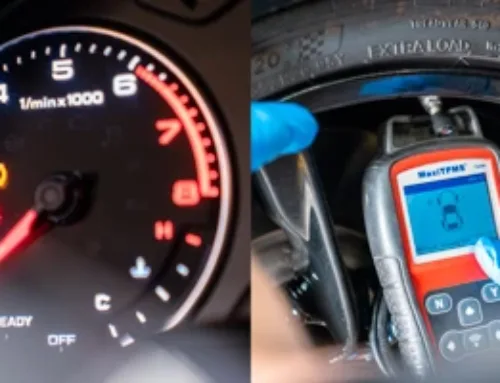Table of Contents
Choosing the right tire size for your car is like finding a perfect pair of shoes. The correct tire size will make all the difference in how your car handles different terrains and weather conditions. It will enhance the performance and ensure a smooth and comfortable ride. If you’re about to invest in a new rubber set, this Guide is just for you!

Locating your vehicle’s tire size
Tire sidewall
One of the easiest ways to determine your vehicle’s tire size is by looking at the sidewall of your current tires. The numbers and letters printed on the sidewall provide essential information like tire size, load index, and speed rating. For example, you might see a sequence like “P215/65R15,” where each character represents specific tire dimensions and characteristics. By understanding this information, you can easily identify the right tire size for your vehicle.
Owner’s manual

Another reliable source for tire size information is your car’s owner’s manual. Look for it within the “Tires” section. The information will be displayed as a sequence of numbers and letters, such as “P215/65R15,” which represents a tire’s:
- Width
- Aspect ratio
- Construction type
- Rim diameter
Doorjamb sticker

In addition to the owner’s manual, tire size information can be found on the sticker on the driver’s side doorjamb. The door jamb sticker typically contains the following information:
- The vehicle identification number (VIN)
- Tire specifications
- Make and model of the car
- Date of manufacture
A reliable tire dealership/shop
If you’re still unsure about the right tire size for your vehicle, consulting a trusted tire dealer can be an easy way to get informed. The representatives of a reliable tire store, like GoTire, will provide expert advice on the appropriate tire size for your vehicle based on its specifications. Sounds good? Just give us a call at 888-622-2060, and we’ll sort you out within a few minutes.
Wheel-size.com
Online resources like Wheel-size.com are valuable in finding the right tire size for your car. This comprehensive database offers a convenient way to access tire and wheel specifications. By entering the make, model, and year, you will get detailed information on the following:
- Tire size
- Wheel size
- Offset
- Bolt pattern
- Recommended tire pressure.
Online tire size calculators
Finally, online tire size calculators can be useful in determining the appropriate tire size for your vehicle. These calculators generate a list of compatible tire sizes by entering the make, model, and year. The most popular tire size calculators (besides wheel-size.com) are:
Understanding tire size terminology
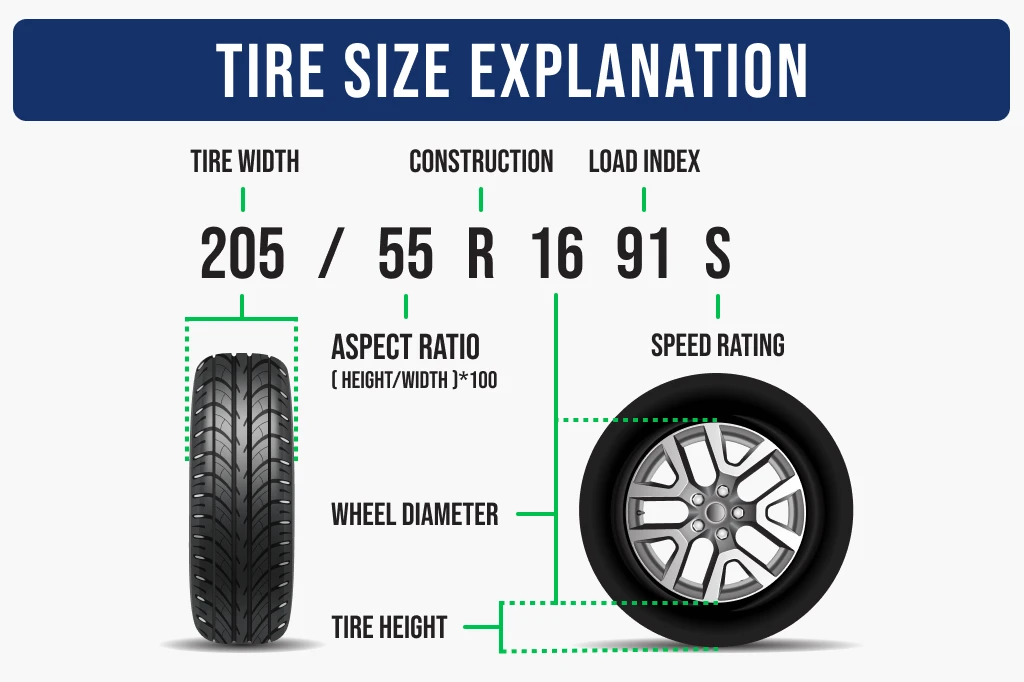
Now that we know how to locate our car’s tire size let’s delve deeper into the terminology. Understanding the components of tire size, including:
- Prefix letters
- Tire width
- Aspect ratio
- Construction type
It is crucial to ensure that you select the right new tires for your car. Let’s break down each of these components and their significance in tire selection.
Prefix letters
Prefix letters in tire size can provide valuable information about the tire’s intended use. For example:
- “P” indicates that the tire is designed for use primarily on passenger vehicles, including cars, minivans, SUVs, and light-duty pickup trucks.
- “LT” indicates that the tire is designed for use on light trucks, including SUVs, vans, and pickup trucks.
- “T” indicates that the tire is designed for use on temporary spare tires.
- “ST” indicates that the tire is designed for use on trailers.
On the other hand, “LT” stands for “LT-metric,” a designation for a “light truck” type tire designed for vehicles capable of carrying heavy cargo or towing trailers. Understanding these prefix letters can help you identify the right tire type for your vehicle’s specific requirements, including choosing the appropriate light truck tires.
Tire width
The first number in the tire size sequence represents the tire width in millimeters. This measurement is crucial as it affects your vehicle’s overall performance and handling. Wider tires tend to provide better traction and stability, especially on sports cars, while narrower tires are often more fuel-efficient.
Aspect ratio & profile
The aspect ratio, represented by the number after the slash in tire sizing, denotes the sidewall’s height as a proportion of its width. In other words, it describes the tire’s profile. A higher aspect ratio, such as 70, means the tire has a taller sidewall, resulting in a more comfortable ride. Conversely, a lower aspect ratio, like 40, indicates a shorter sidewall, which can provide better handling and performance. By understanding the aspect ratio and its impact on tire characteristics, you can make an informed decision when selecting the right tires for your vehicle. Sounds a bit complicated? Don’t worry. We’ve got you covered! Dial 888-622-2060, and our 24/7 customer support team will help you make the right choice.
Construction type
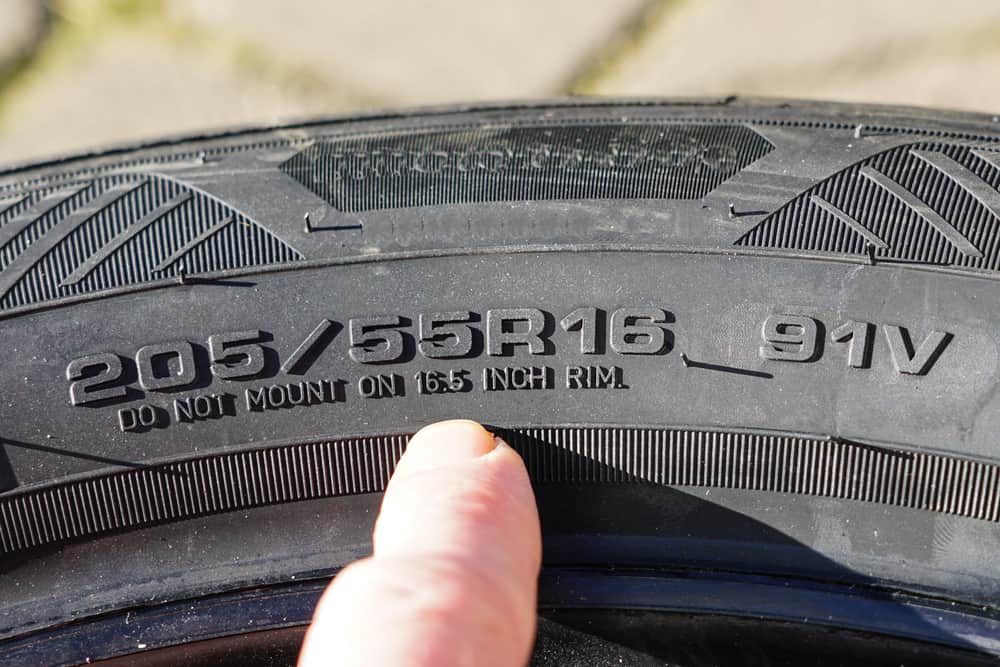
There are several tire construction types, each with its benefits and drawbacks:
- Radial tires feature the tire’s internal ply cords extending radially from the bead to the tread, providing excellent ride comfort and wear resistance.
- Run-flat tires are designed to allow you to continue driving for a short distance, even after a puncture or loss of air pressure.
- ZR tires are high-performance tires with a speed rating of over 149 mph.
Run-flat tires are specifically designed to enable continued operation even after a puncture, while ZR tires are high-performance tires designed for superior handling and grip in both wet and dry conditions. We recommend you get acquainted with different construction types to make better tire choices.
Rim diameter & compatibility
Rim diameter is an essential factor to consider when selecting the right tire size. It determines the size of the wheel that the tire can accommodate, and it’s crucial to ensure compatibility between your tires and rims. In the following sections, we will explore how to measure rim diameter and the factors to consider when selecting compatible tires for your rims.

Measuring rim diameter
To accurately measure the diameter of your car’s rims, follow these steps:
- Use a tape measure starting slightly inward from the edge or lip of the wheel.
- Extend the tape measure across the center of the wheel to the opposite edge or lip.
This will provide the true diameter of the rim, ensuring that you select the right tire size for your vehicle’s rims.
Compatibility factors
When selecting compatible tires for your rims, several factors must be considered.
- Optimal performance and compatibility determined by tire and rim width combinations
- Inner rim width dimension
- Tire size range compatibility
- Tire width vs. rim size
Make sure you choose the right tires for your rims! You can always check out The Tire and Rim Association‘s official website for more information.
Load index & speed rating
Understanding load index
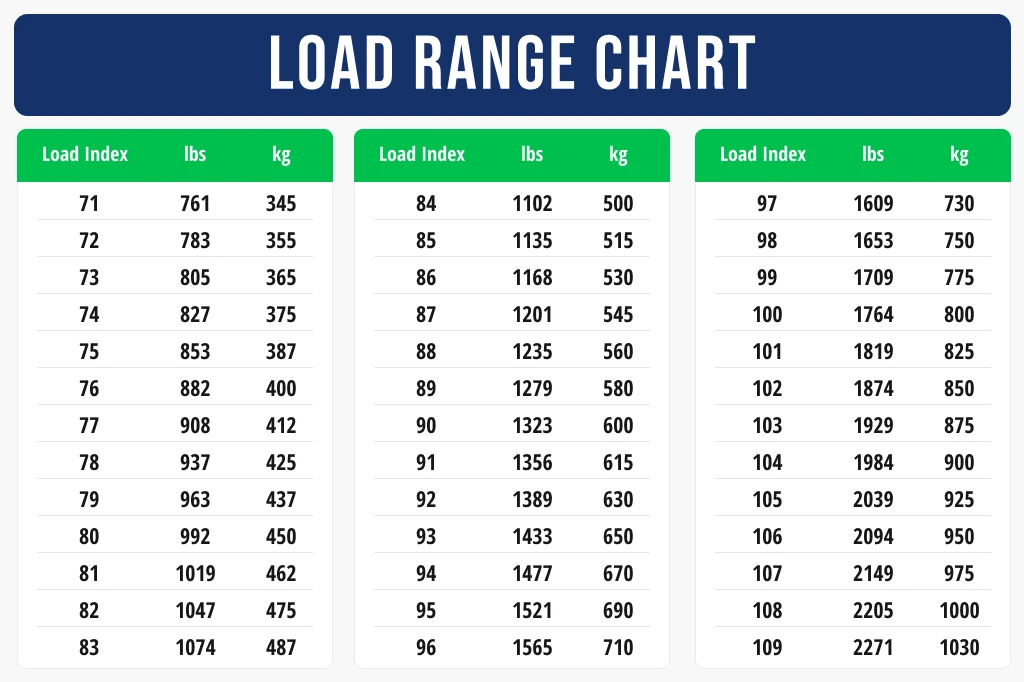
One of the numerical codes on the tire sidewall represents the load index. It specifies the maximum load the properly inflated tire can carry at a given tire speed rating (per tire). It is imperative to ensure that the tire’s load index is suitable for the vehicle and the load it will be transporting. Understanding the index is super easy: refer to the image above, and don’t exceed the specified weight limits.
Speed rating importance
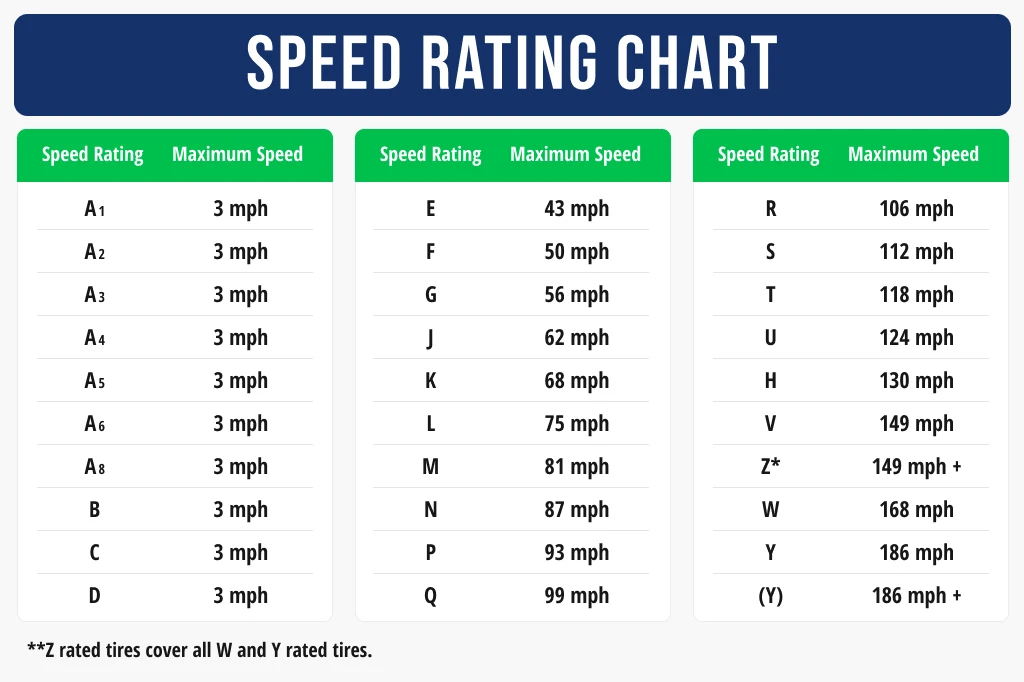
The speed rating is paramount as it helps guarantee that the tire is capable of meeting your car’s speed and performance requirements. A tire with a higher speed rating will be able to accommodate greater velocities and consequently ensure enhanced performance and safety while also helping to maintain vehicle speed capability. Please refer to the image below to identify the correct speed index for your ride.
Selecting tires based on weather conditions
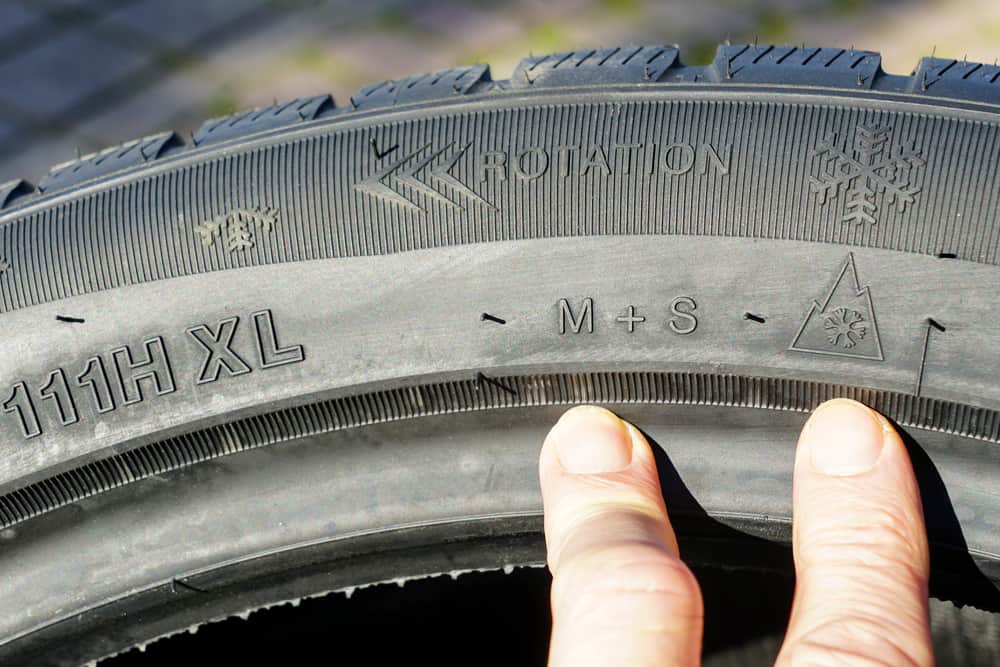
Understanding the differences between summer, winter, and all-season tires is important in choosing the right ones. Summer tires are designed for enhanced traction on dry and wet roads in moderate or warm weather, while dedicated winter tires offer improved snow traction, including the ice. On the other hand, all-season tires provide reliable performance in various weather conditions, including light snow.
Special symbols on tires
Special symbols on tires can provide valuable information about their suitability for specific driving conditions. For example, tires designated for harsh winter conditions are identified by two distinct symbols on the sidewall: either the M+S symbol (for mud+snow all-season tires). On the sidewall of winter tires, you will find the three-peak mountain snowflake (3PMSF) symbol.
Why choosing the right size for your car tires is so important?
Choosing the right tire size for your vehicle ensures safety, vehicle handling performance advantages, and overall driving satisfaction. Once you’ve read this blog post, you know about the various aspects of tire size—prefix letters, tire width, aspect ratio, construction type, rim diameter, and compatibility. Make an informed decision and enjoy the tires that perfectly match your ride. If you need any assistance, call us at 888-622-2060, and the GoTire team will give you free advice based on your driving conditions, vehicle specifications, and personal preferences.
Frequently Asked Questions
How do I know what size tires will fit my car?
To know what size tires will fit your car, check your vehicle owner’s manual, the driver’s side door sticker, tire size calculators such as wheel-size.com, or call your local tire dealership. All these are reliable resources of the tire manufacturers’ recommended tire sizes for particular cars.
What are the benefits of selecting the right tires?
Choosing the correct tires is essential for ensuring safety, enhancing the driving experience, and optimizing vehicle performance in various conditions.
Which tires are best suited for my needs?
The easiest way to find out is to refer to specialists. The GoTire customer support crew is well-equipped to provide the best and clear guidance.
What is the tread-wear rating, and where can it be located?
The tread-wear rating is a numerical value indicated on the tire sidewall following the phrase “treadwear”, which represents the tire’s wear rate when tested under controlled conditions.
Should all 4 tires be the same size?
Yes, all four tires should be the same size for most modern automobiles. This helps ensure that cornering, braking, and acceleration are balanced and predictable. Having different sizes on some four-wheel and all-wheel drive vehicles can actually do damage to the vehicle.
How do I know what size tire will fit my rims?
You must match the wheel’s diameter and width to find a compatible tire for your rims. A 215/65R17 tire will only fit a 17” diameter wheel, but there is some flexibility when it comes to the width. For example, a 215/65R17 tire can fit a wheel with a 6.5” to 8.5” width.
What is the significance of load index and speed rating in tire selection?
Load index and speed rating are essential when selecting tires, as they determine the tire’s capacity for carrying weight and its maximum speed capability. These ratings are usually found on the sidewall of the tire and are important to consider when making a purchase. For example, a tire with a load index of 95 and a speed rating of H can carry a load index of 95.









